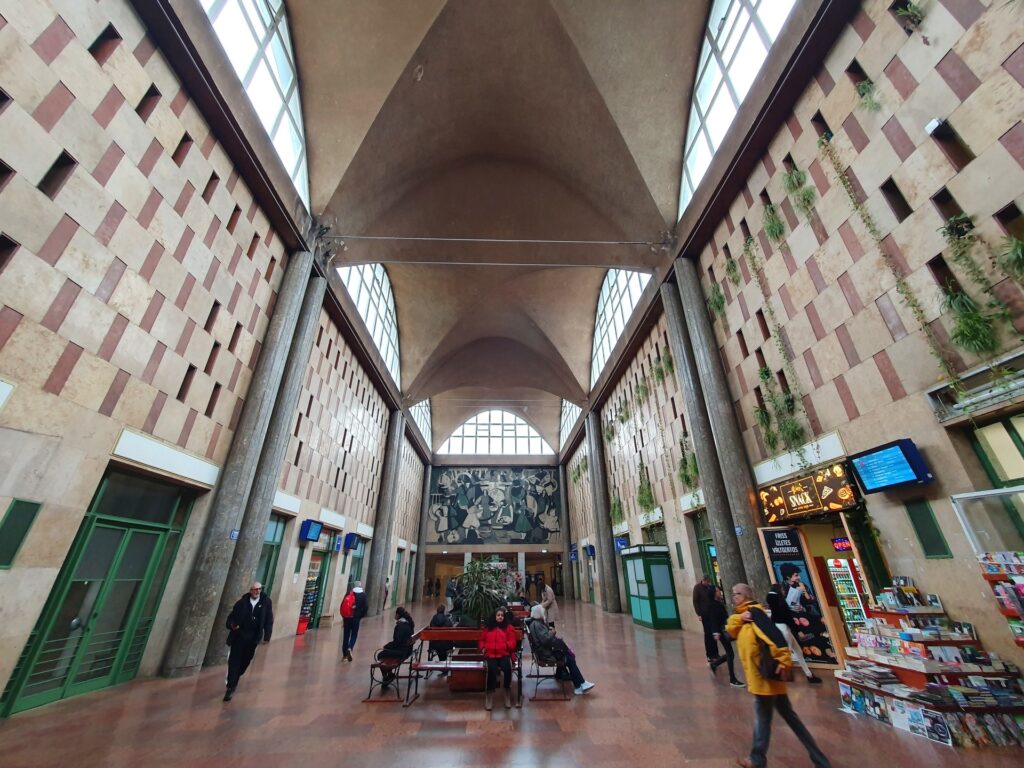“It’s not who you are but what you do that defines you.”
I invite you to travel with me. We will start from Baia Mare, the most important city of northern Romania, and we’ll cross the border into Hungary, where we’ll stop in two major cities: Debrecen (the second largest city in Hungary after Budapest) and Nyíregyháza (which is similar to Baia Mare in size and population). It is important to say that we will not only cross a geographical and political border, but also a mental border between the East and the West. Romania has been recently described as an emerging south-eastern powerhouse by the European Union’s propaganda (and paper-based statistics) and Hungary has been heavily criticized by the same European Union because it takes an independent stance (and struggles to remain reasonable on several political issues). In this article we will see the railway stations of the three cities – the city gateways or what any tourist sees for the first time while entering these cities – and you will decide for yourself if there are differences between the two countries and… mentalities. So… join me!

This is Baia Mare railway station, the main hall. You can see the European Union flag to the left, so you are definitely in Europe. The station was built before 1989, under the communist rule, and probably never had a renovation since.
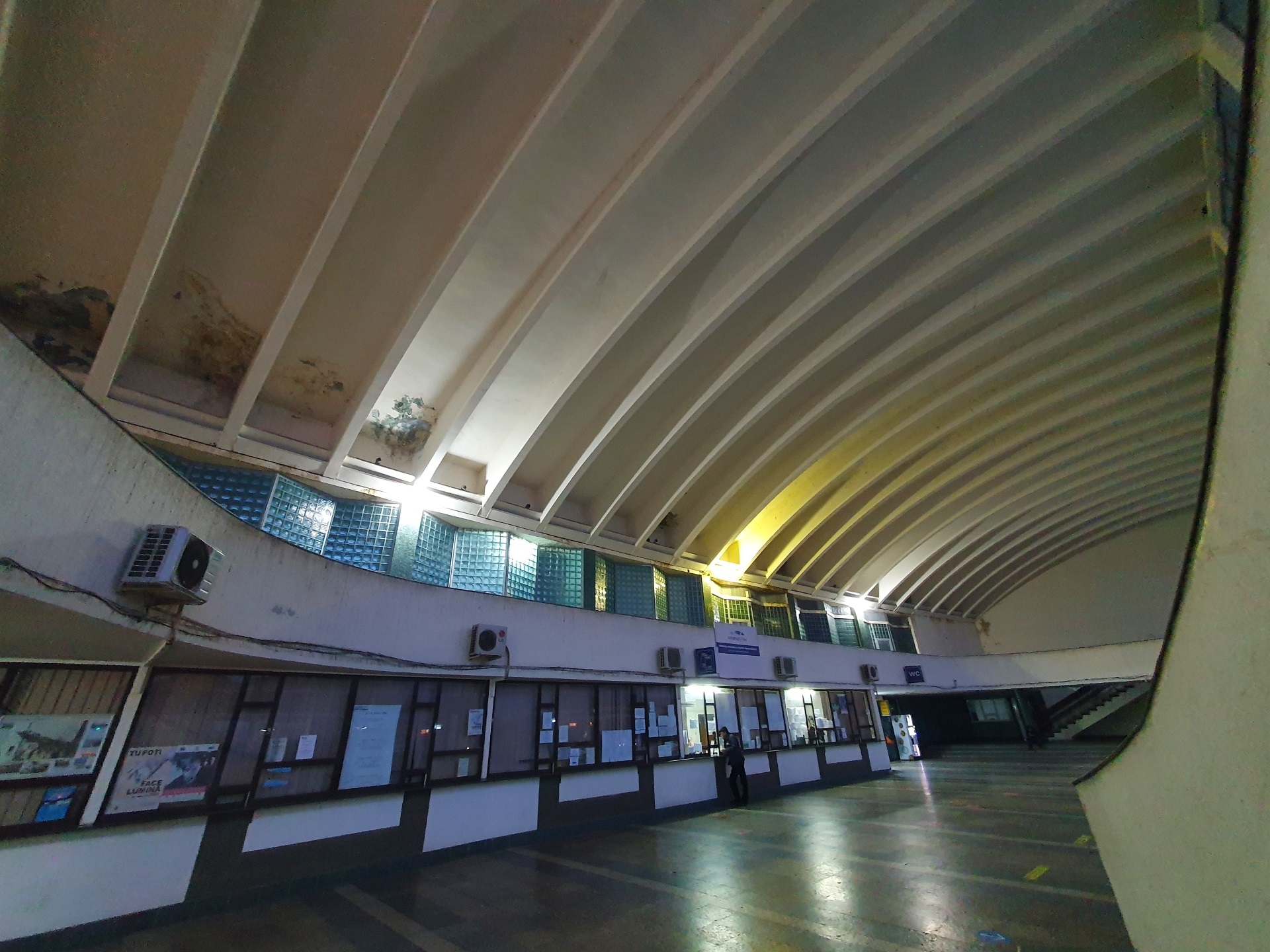
Here, at ground level, you can see the ticket office in the center and the consequences of bad weather on its roof. A bit to the right is the toilet, which is open. The rest is closed.
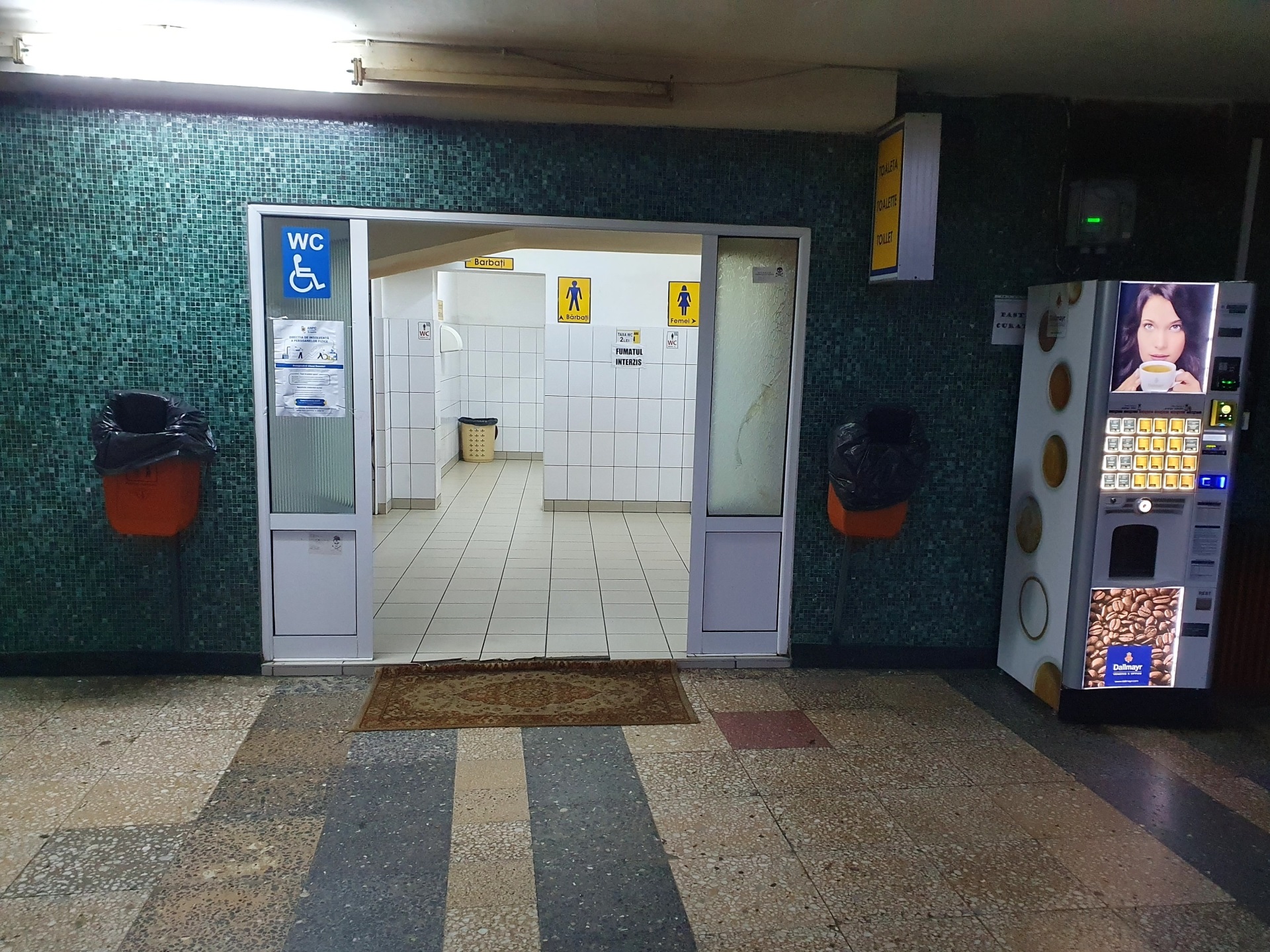
If you want to go to the toilet, you are welcomed by a carpet; not sure how hygienic it is… I guess that someone just brought it from home…
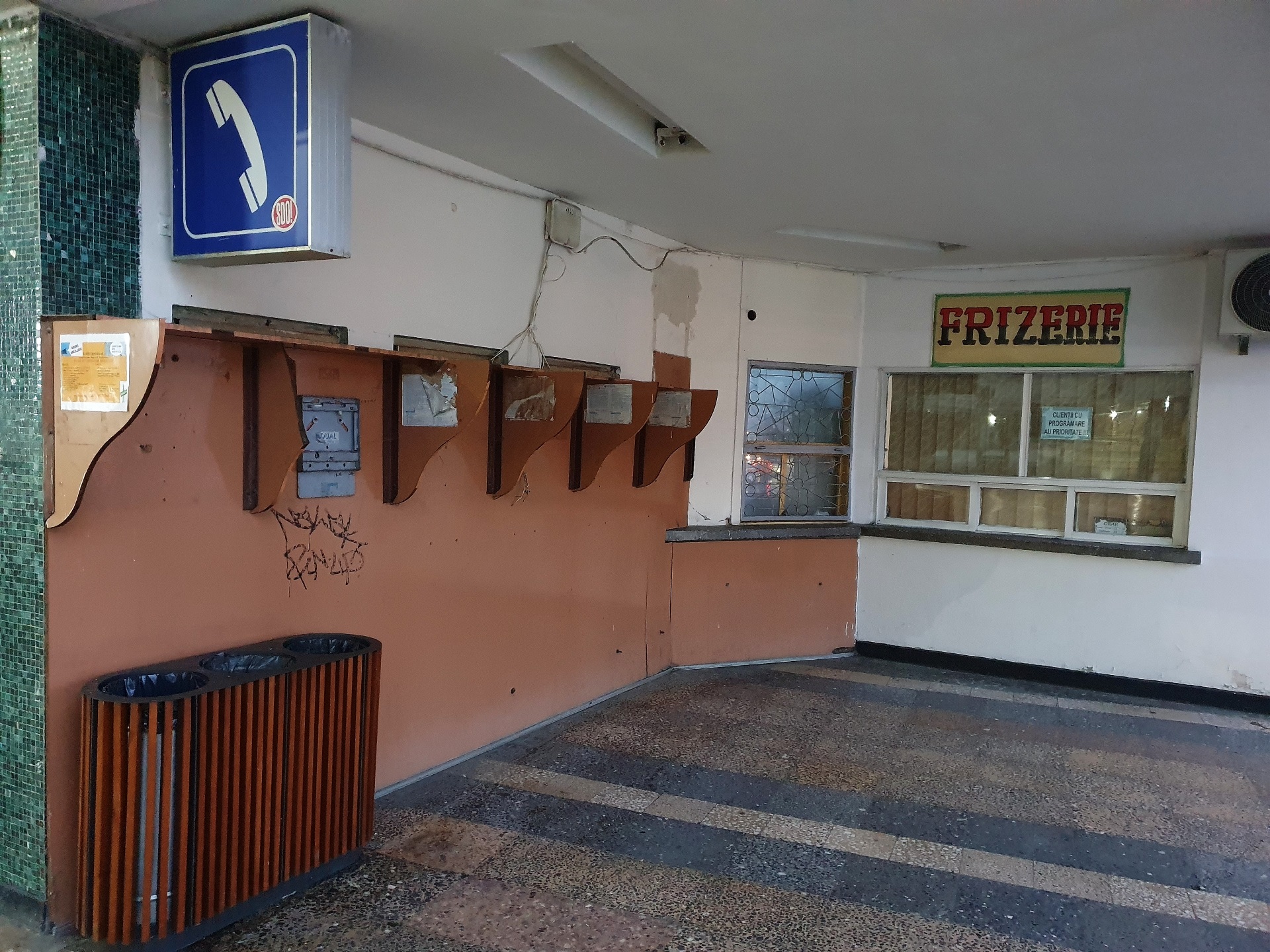
Moving a bit to the right we can see the half-boxes of what used to be public telephones. The devices are no longer there but their boxes are. History on display… However, the telephone sign is still there. “Frizerie” is translated by Hairdresser’s, and a small notice on the window writes in Romanian that “customers with an appointment have priority”. What a hairstylist does in a railway station… is everyone’s guess…
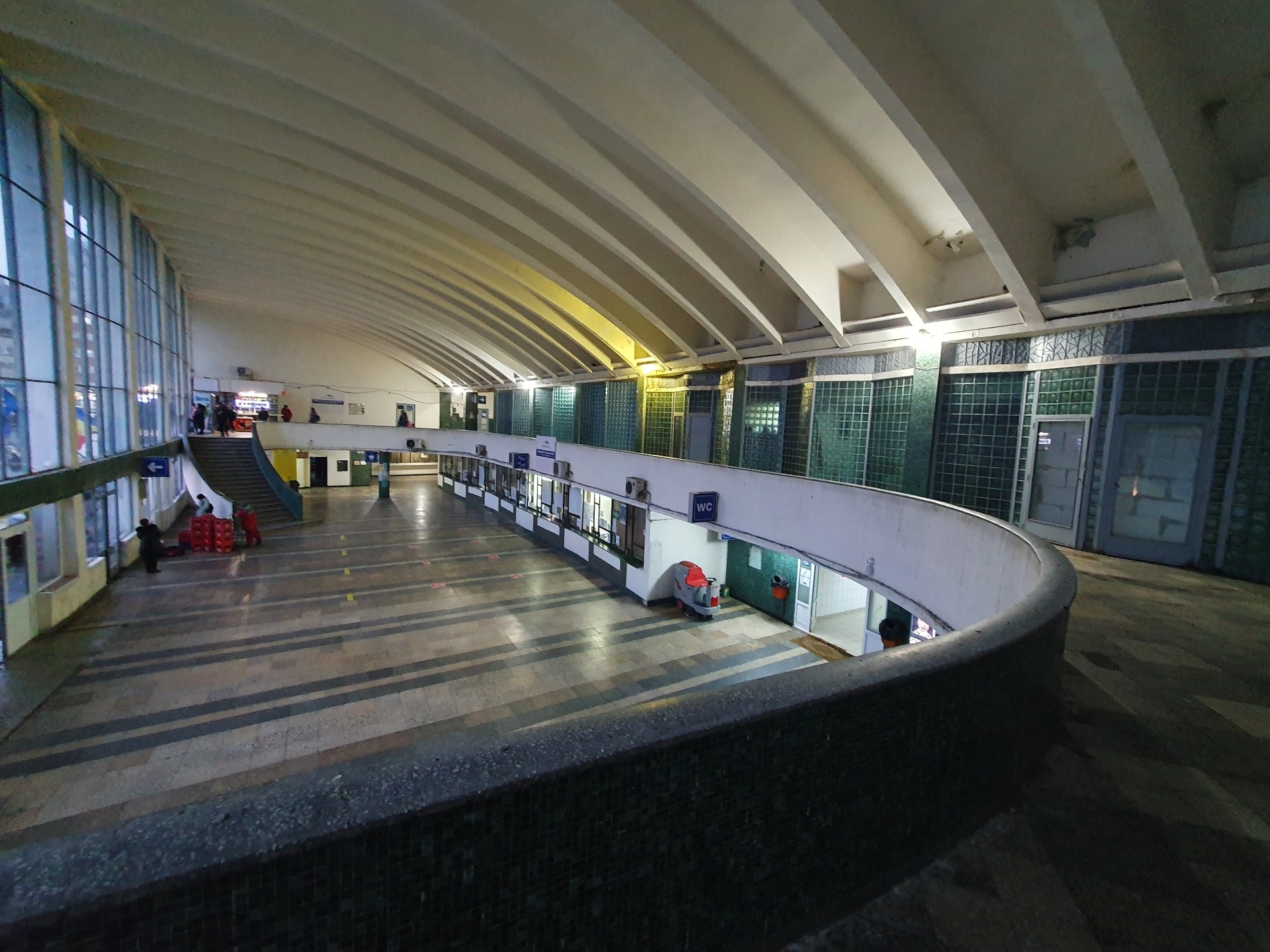
Above the hairstylist one finds stairs going to the upper level. Here’s the view! To the right you can see something that looks like an entrance.

It’s what used to be the entrance into the waiting hall, where the travelers used to sit while waiting for the trains. It’s completely bricked up; it’s just a wall… The water you see on the floor comes from the roof, which is completely riddled as if by bullets and the rain comes inside in many places in the entire railway station…
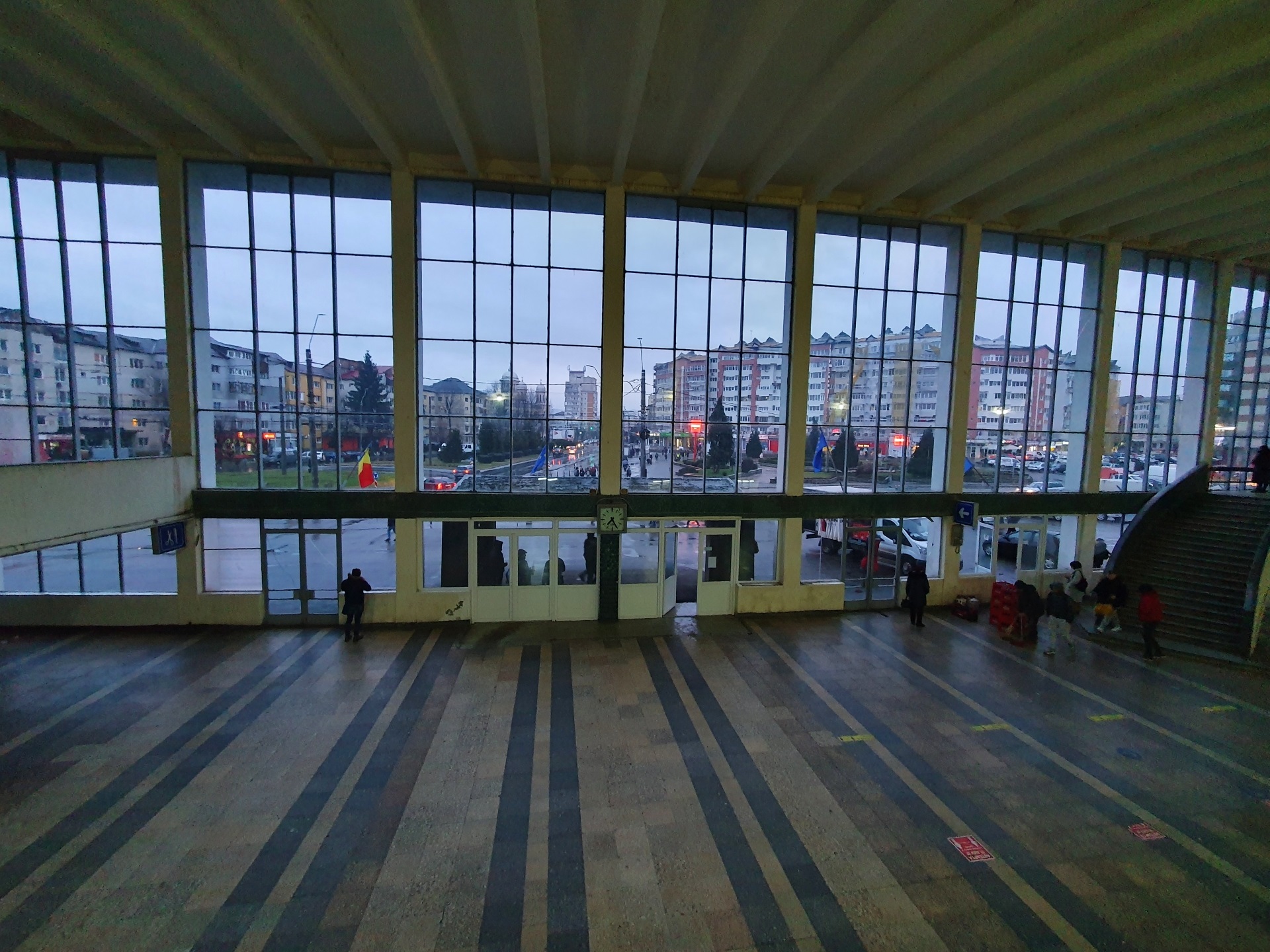
Here is the entrance and the view of Baia Mare city from inside. Many communist era blocks, I know. It gives you a very Russian feeling. You are not wrong, it truly is so.
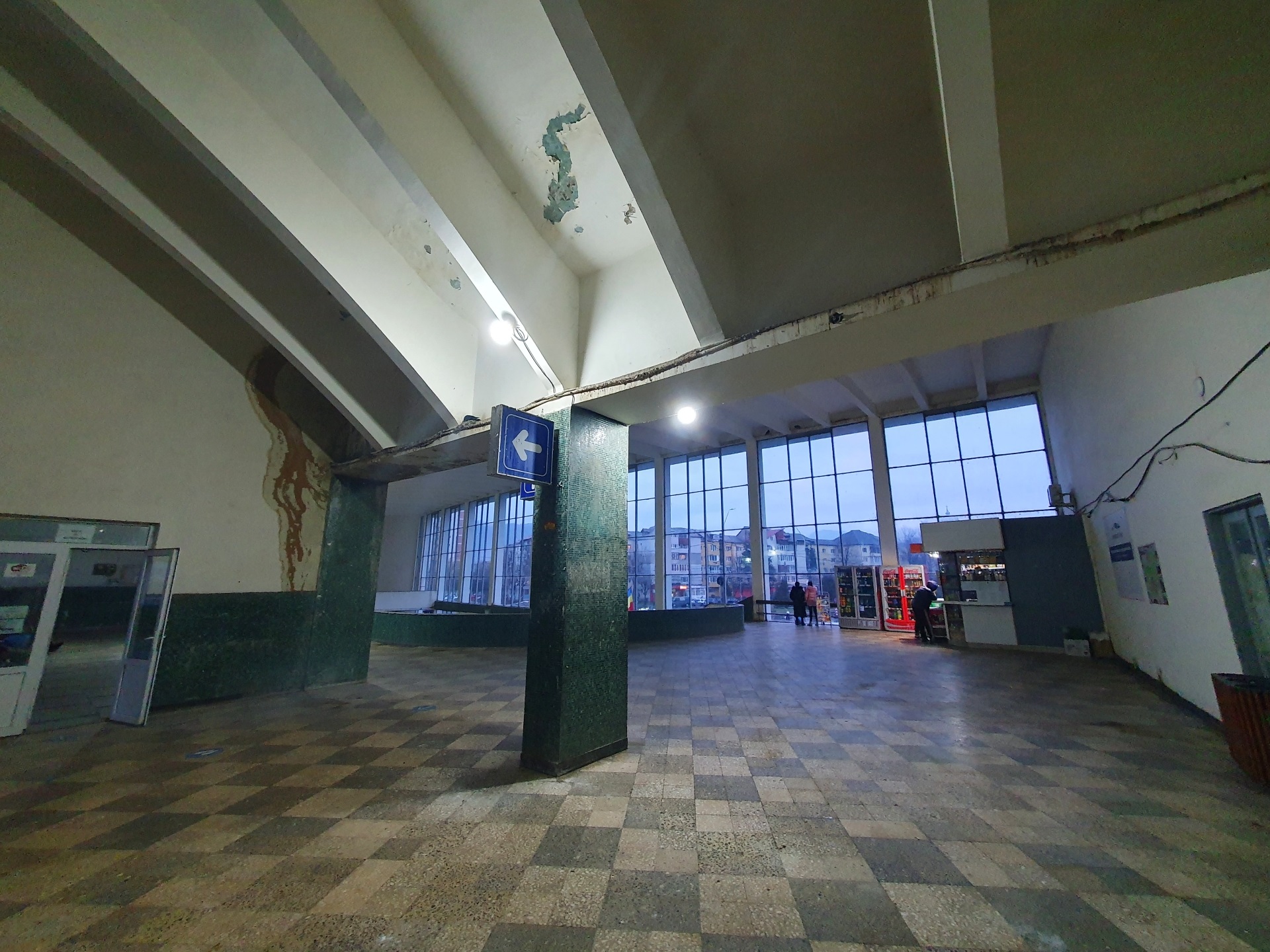
Upstairs it’s the only shop of the station, where everybody buys food and/or alcohol. Note the mold on the walls! To the left is the entrance into the aforementioned waiting hall. Let’s have a look inside!
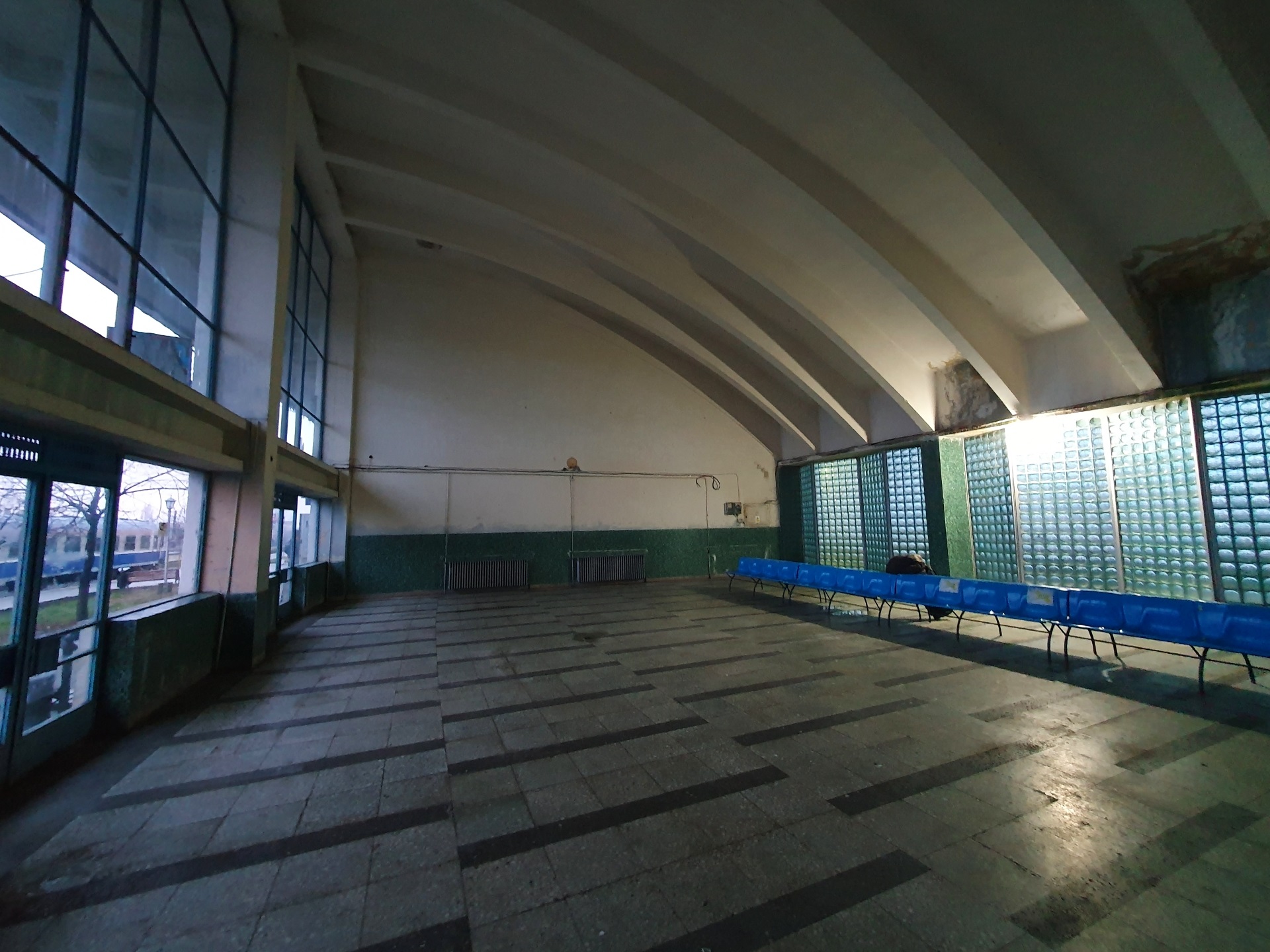
It’s basically a huge empty room with a single row of benches. It’s indescribably sad. The smell of pigeon excrements is also indescribable and made me feel nauseous, although, being a physician, I’m used to a lot of bad smells from my patients. Yet, there were people waiting there on those benches. There is a saying that “you can’t defeat a people accustomed to getting (living) on their knees”. If you can breathe in pigeon sh*t & mold-infested air and sit comfortably in cold, you have solved all your other problems, including those with God and the afterlife… Now let’s go to our train!

Robert Frost writes at the end of his poem, “The road not taken”, that “Two roads diverged in a wood and I took the one less traveled by. And that has made all the difference”. Well, this is a good image for that last line…
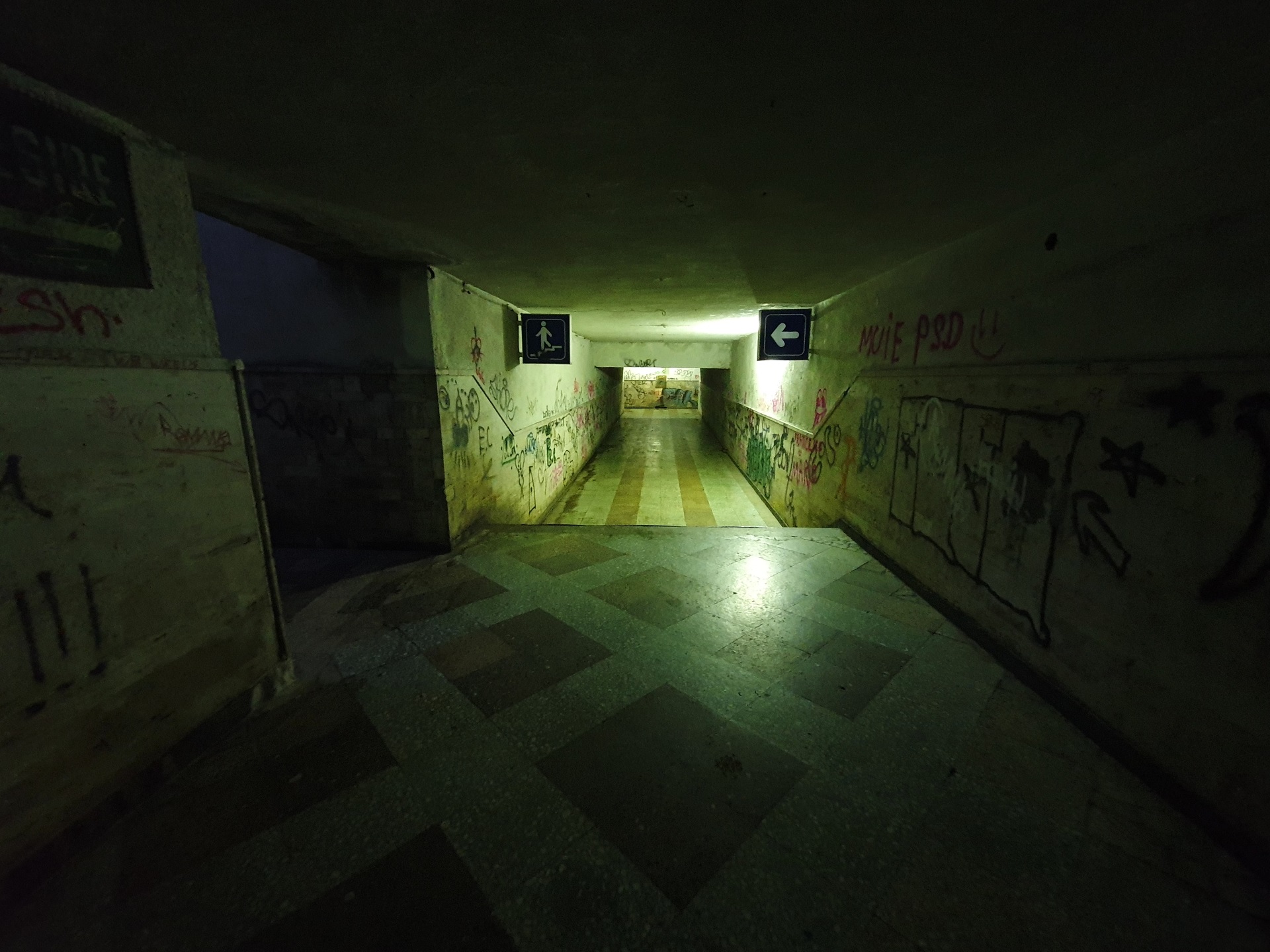
Are you afraid of darkness? Yes? Well, we can cure you here. ‘Cause you must face this tunnel so as to get to your trains. You Shall Face It! There Is No Other Way!
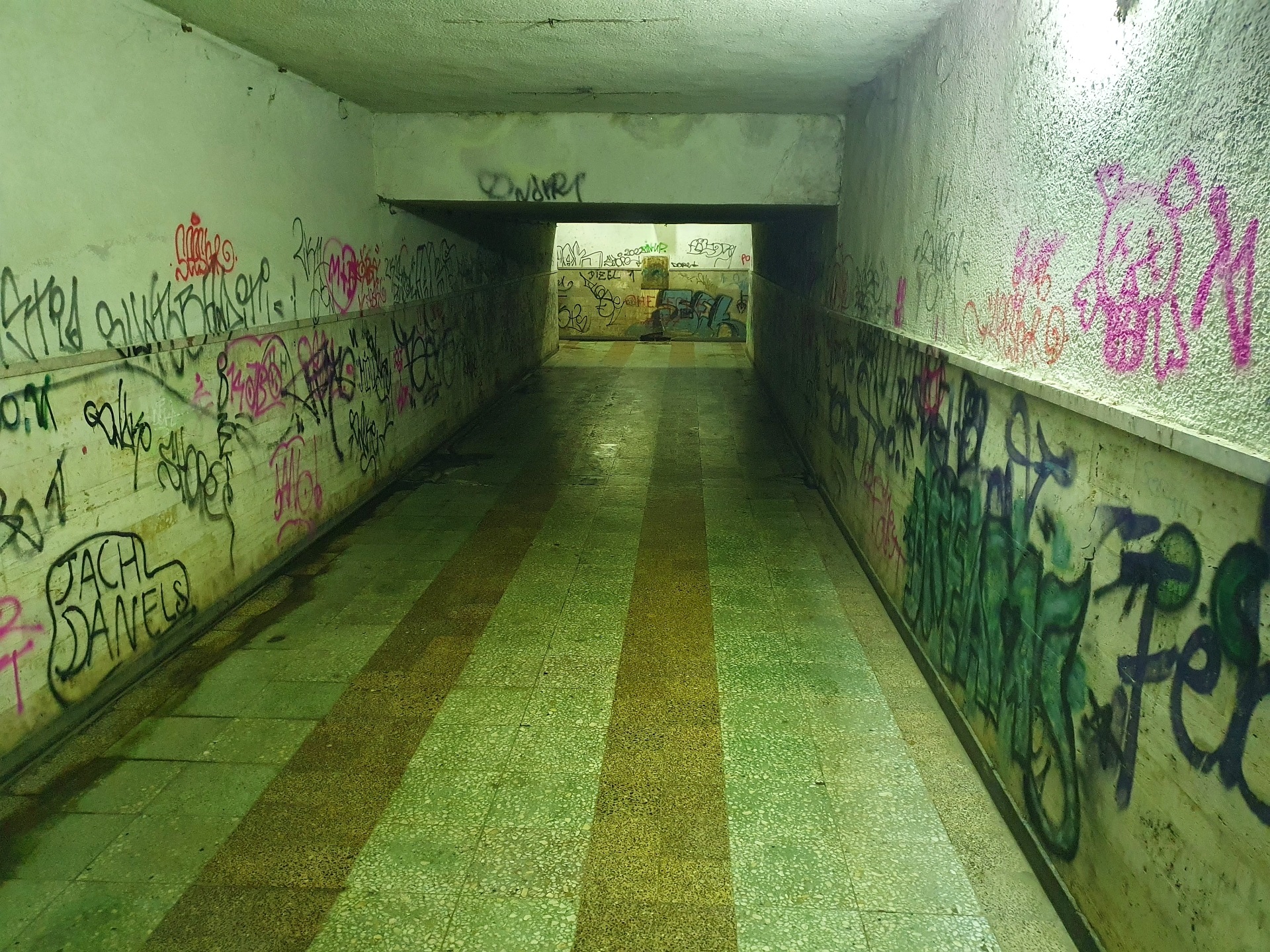
Some people are artists. Enjoy the graffiti! We are creative indeed…
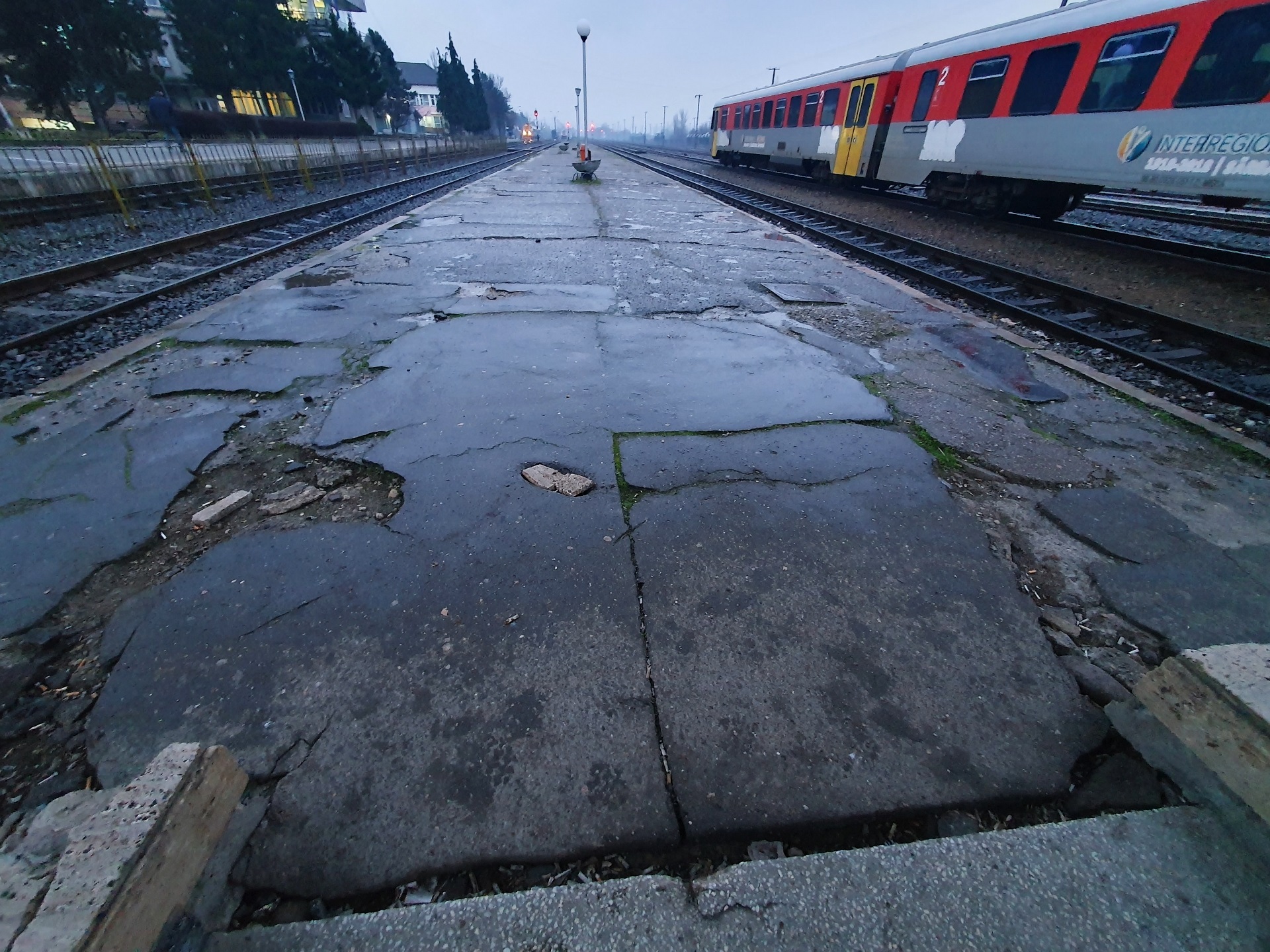
Welcome to the platform! Be careful where you put your foot! Mind the gap(s)!
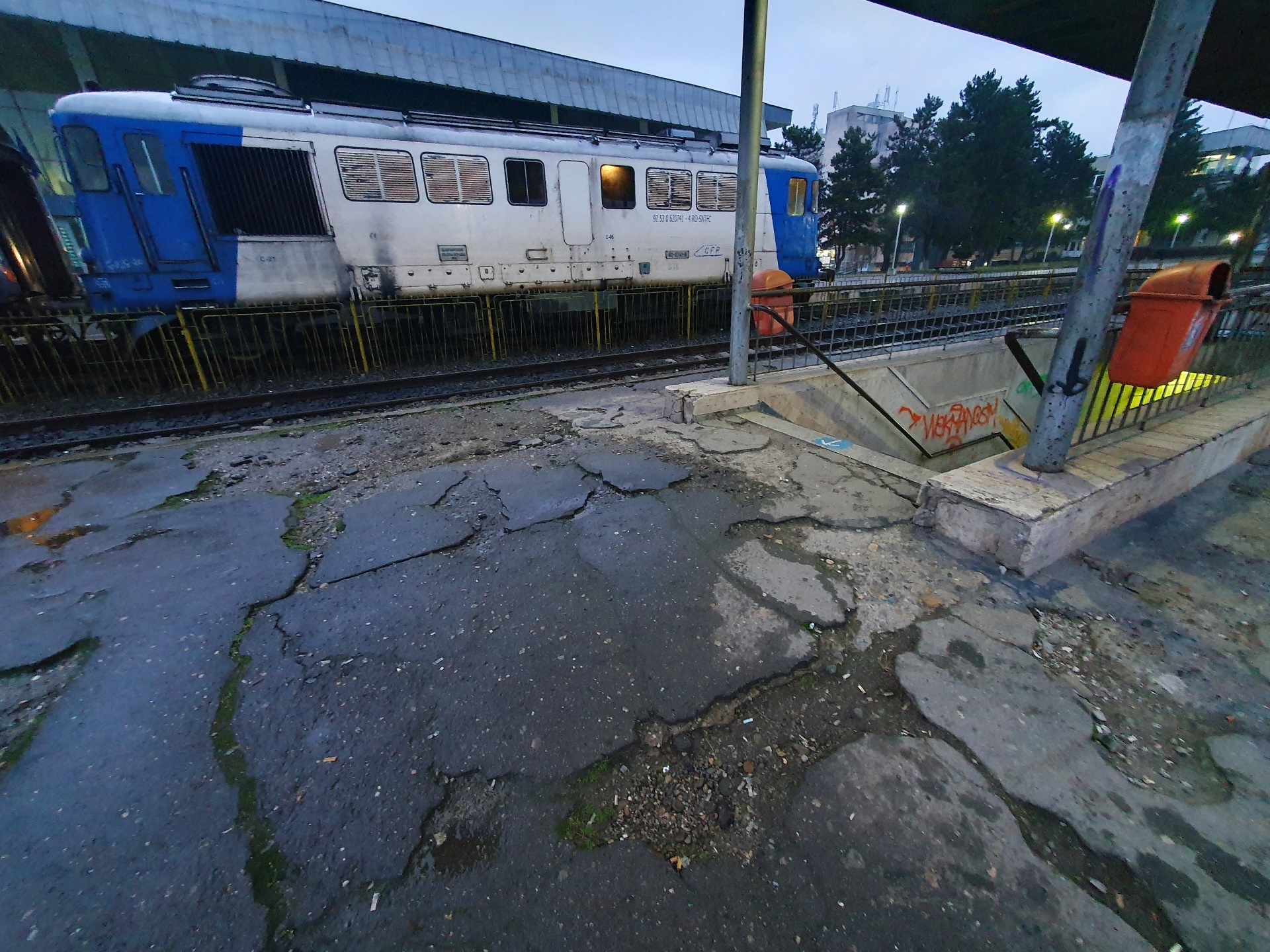
This is the hole that you came out of. Enjoy some East-European flavor! It’s free!
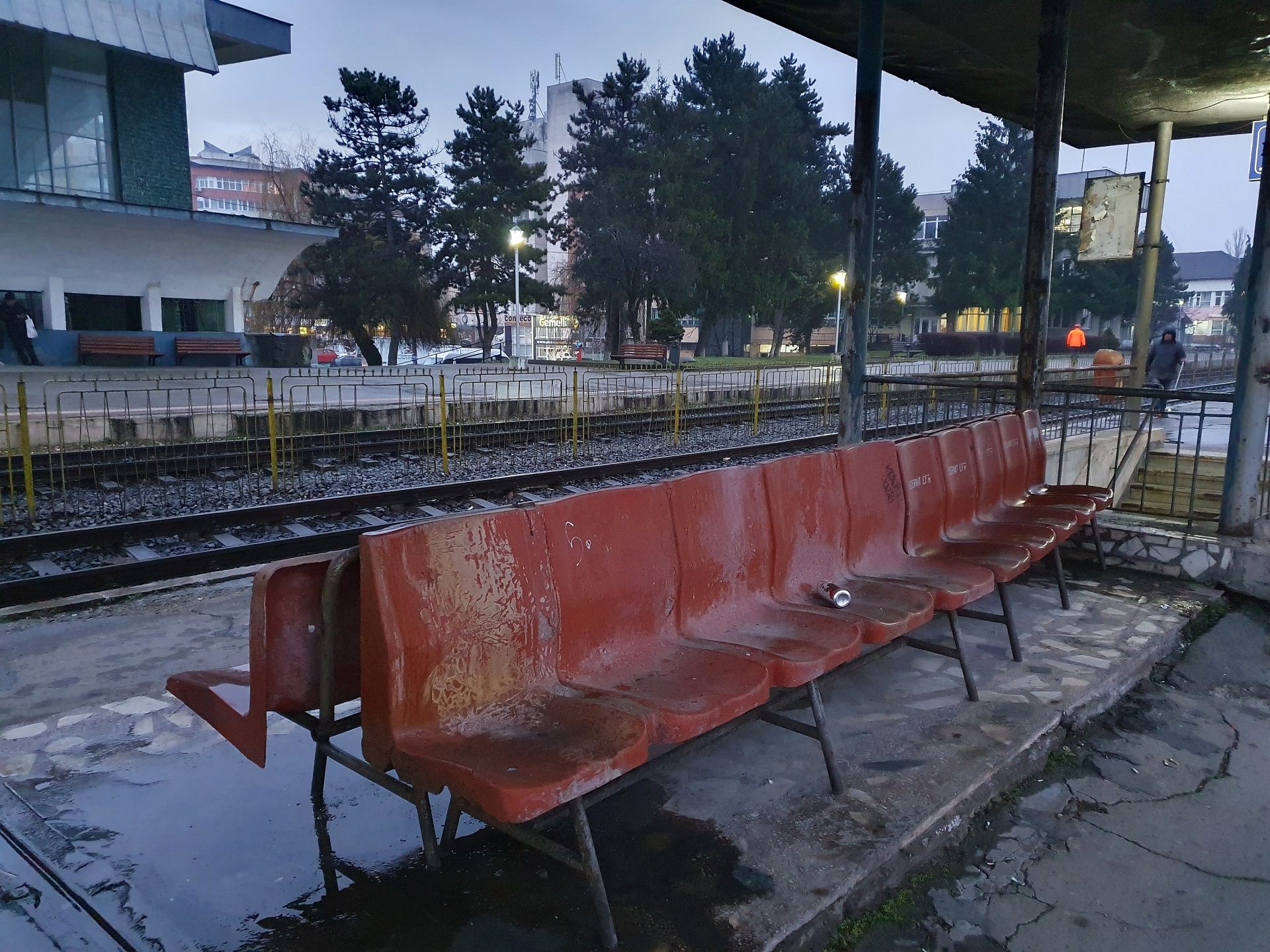
Enjoy the vibe! Have a seat!… if you dare…
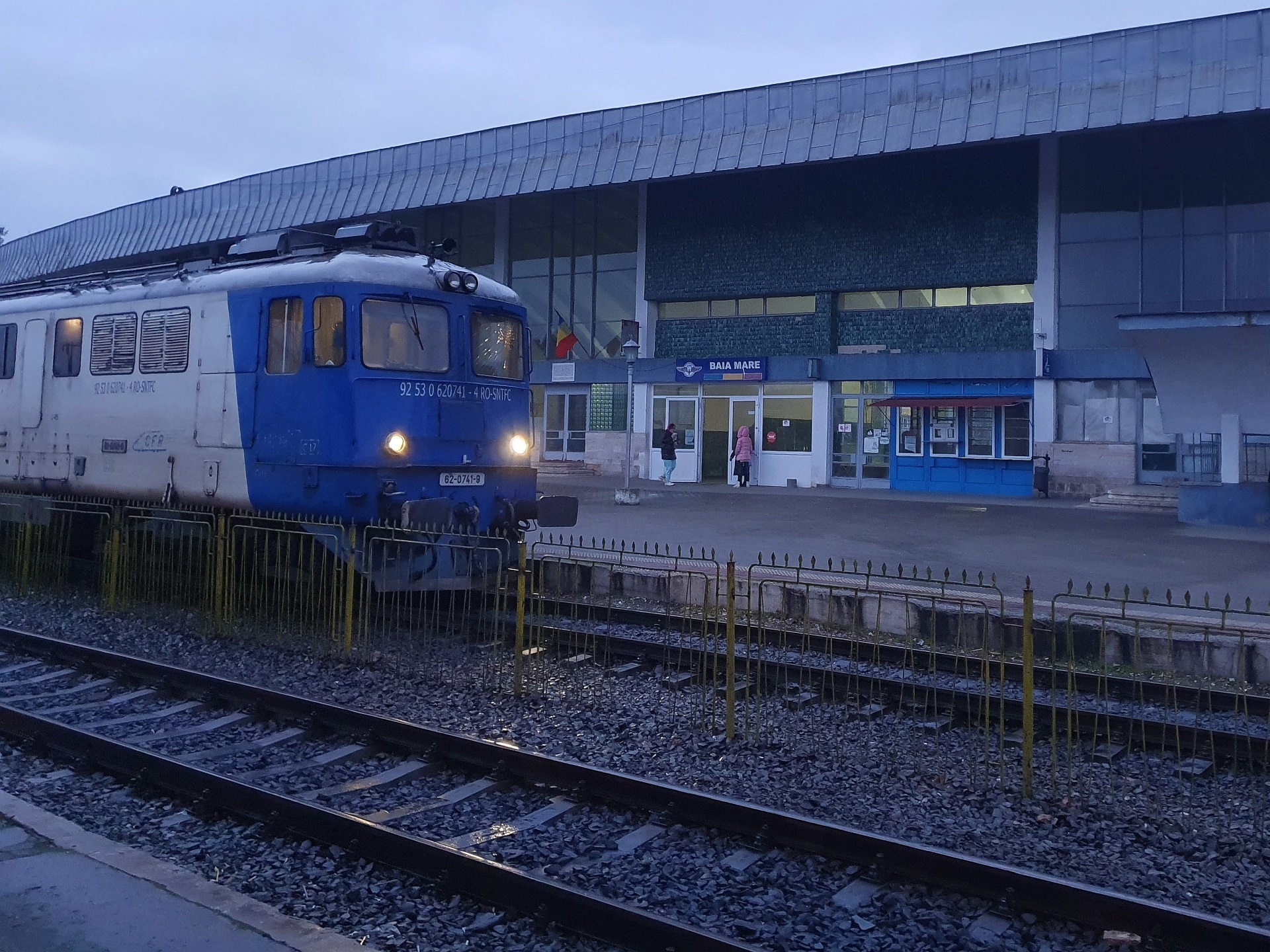
Baia Mare Railway Station greets you and wishes you a pleasant voyage!
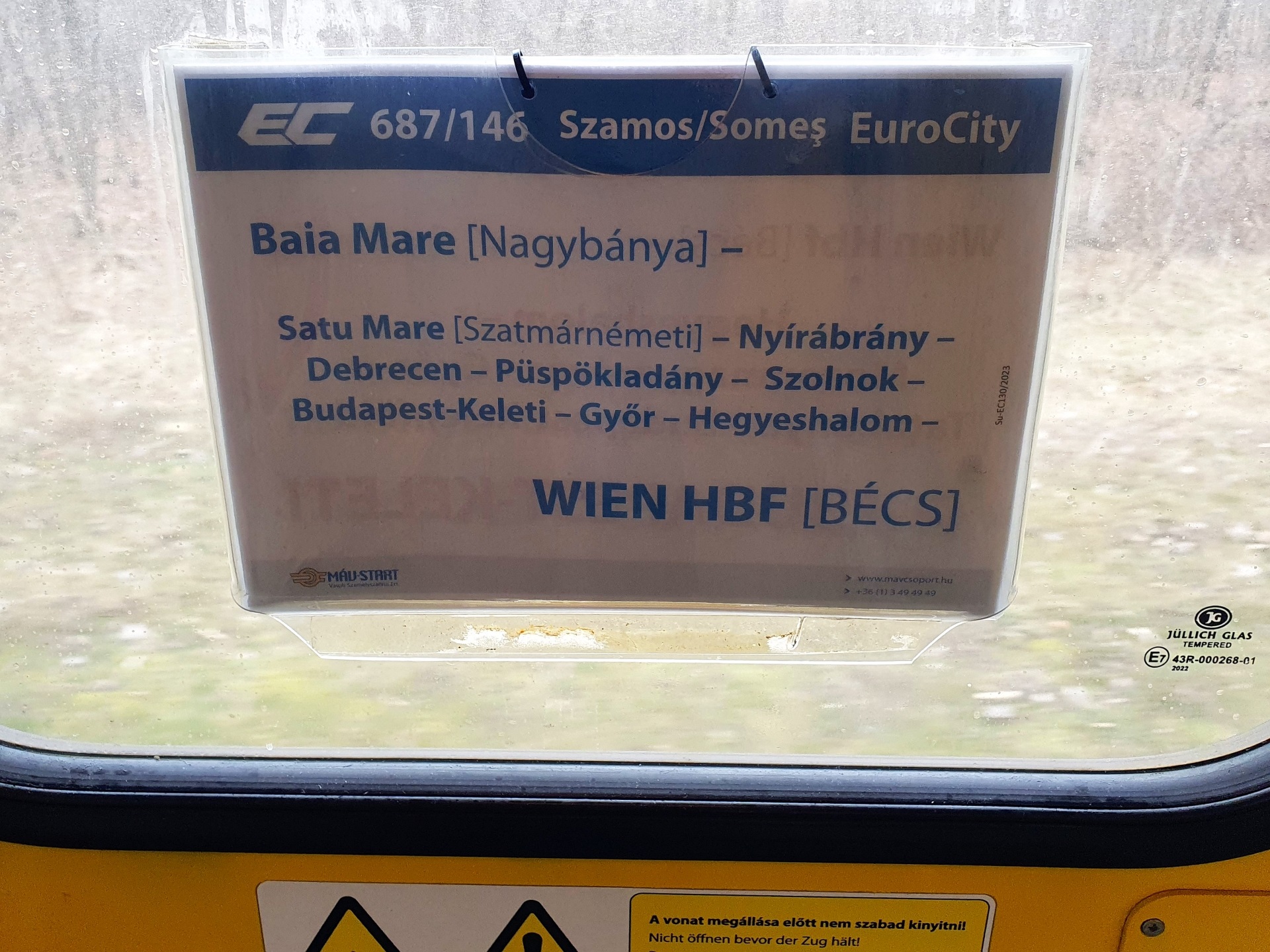
We are in the international train connecting Baia Mare to Vienna, Austria, across the entire Hungary. It takes more than 3 hours on the Romanian territory and a total of 6 hours to reach Austria, because the rail in Romania is in such a bad condition that the train must go at a very slow speed and there are huge delays. The train cars are actually Hungarian, but the rails are Romanian and everyone is mad because of the speed and the lost time.
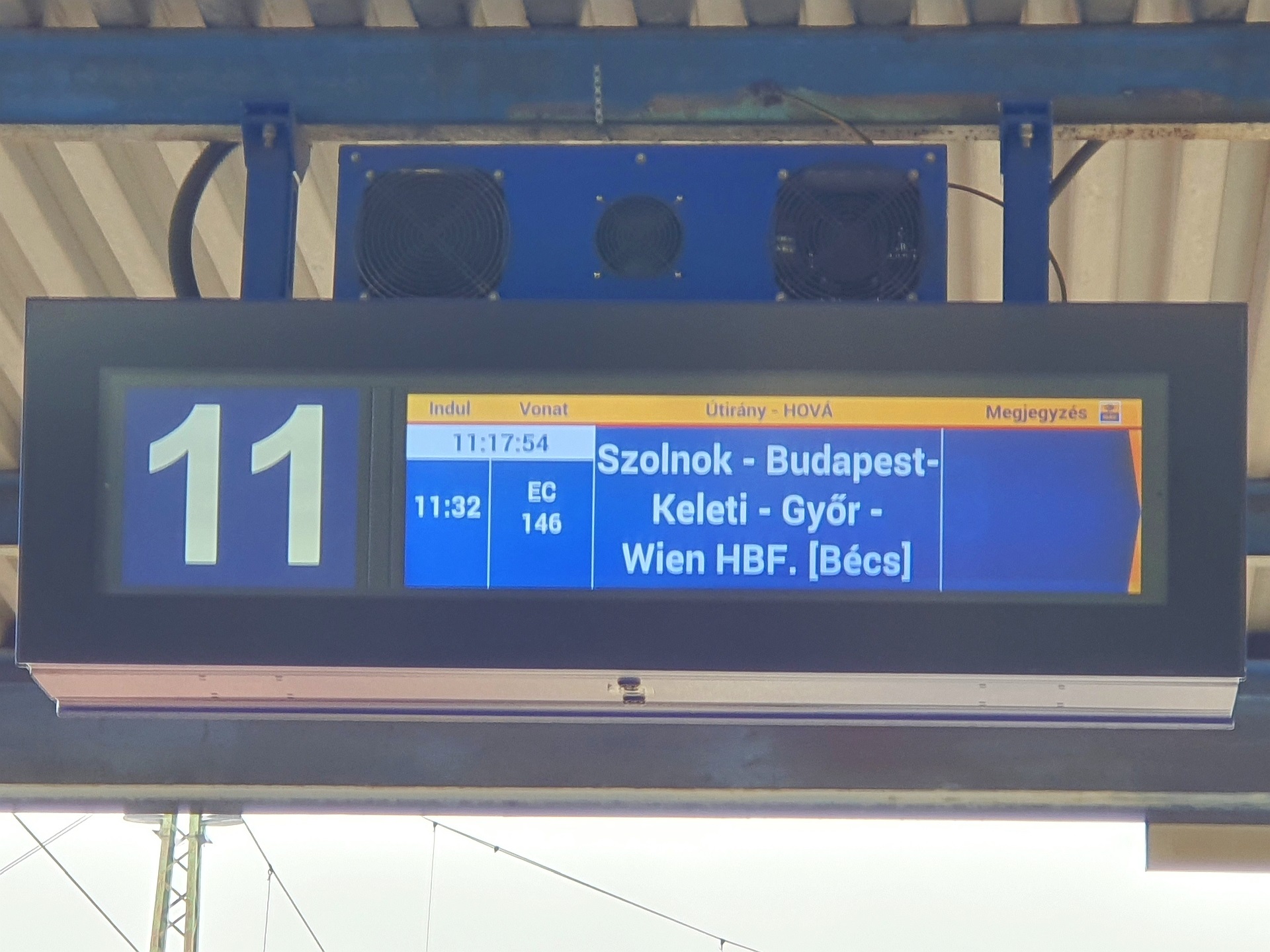
We are in Debrecen, at about 40 kilometers from the Romanian border. We are, finally, in Hungary. What do you think: is it so bad?
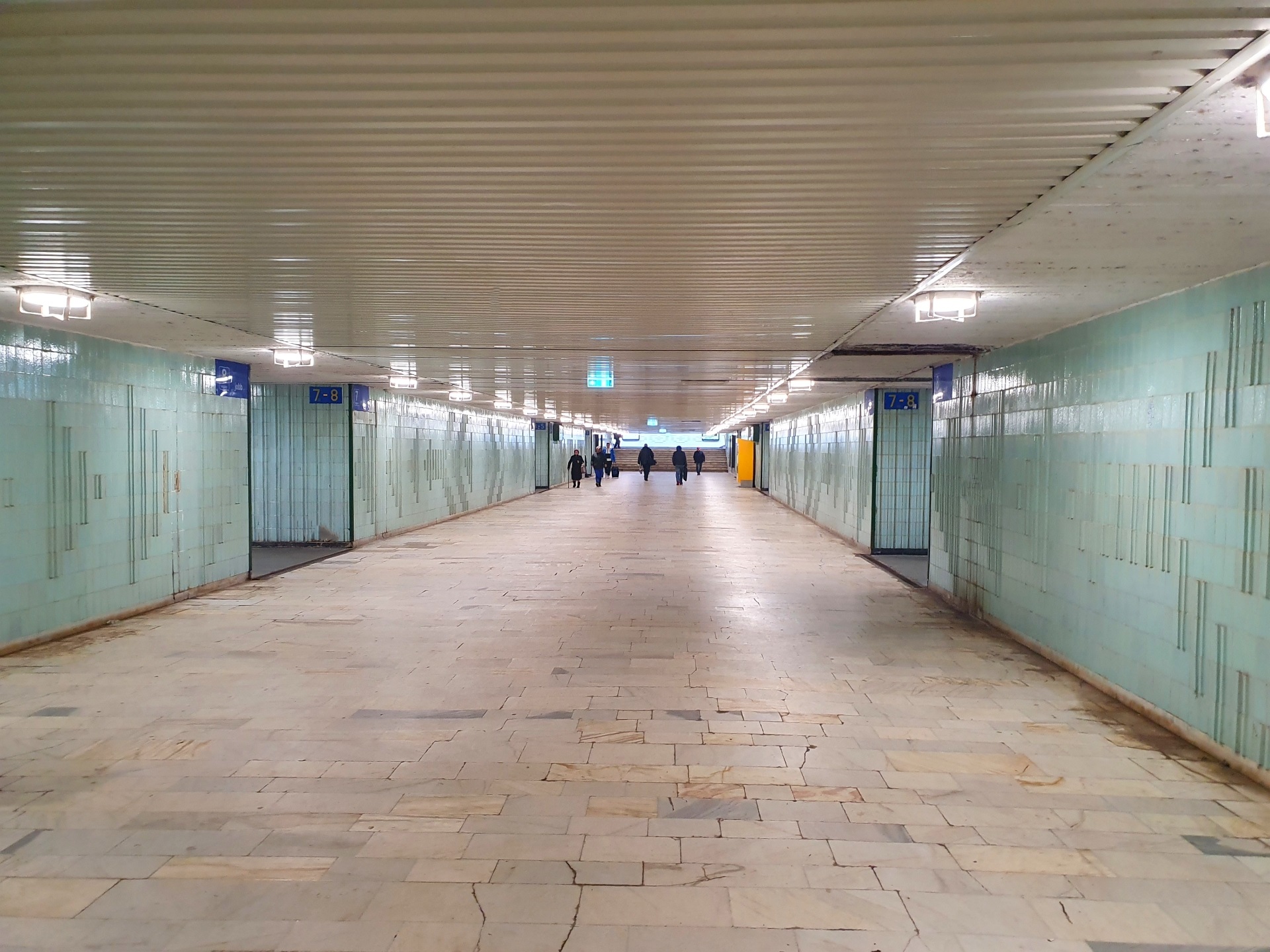
First, there is no darkness, so you can’t cure your fears here…

These are the rails and the station in the background.
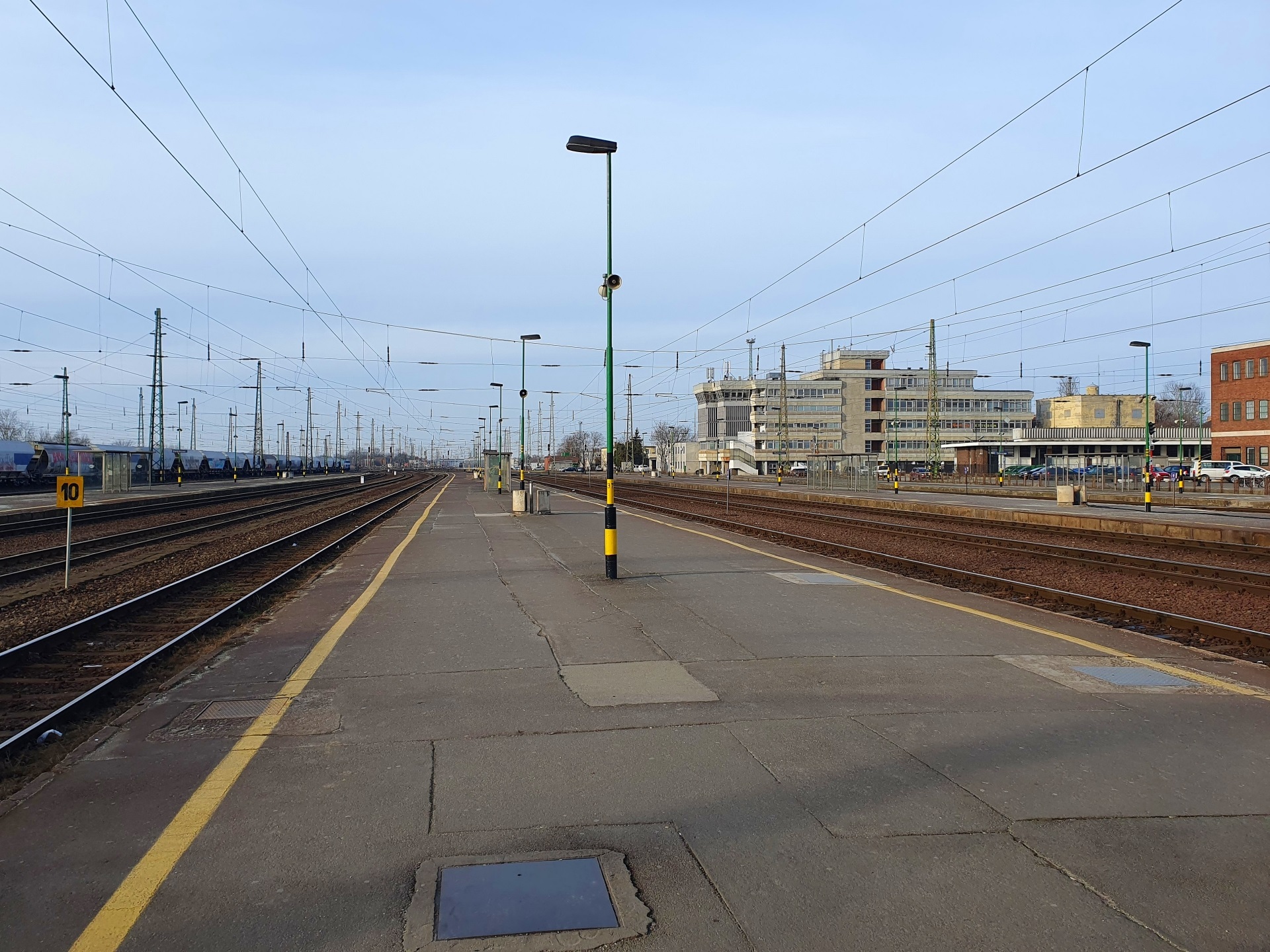
And the platforms. No holes. Nothing. Just the usual Western World train platform which I know from France or Germany.
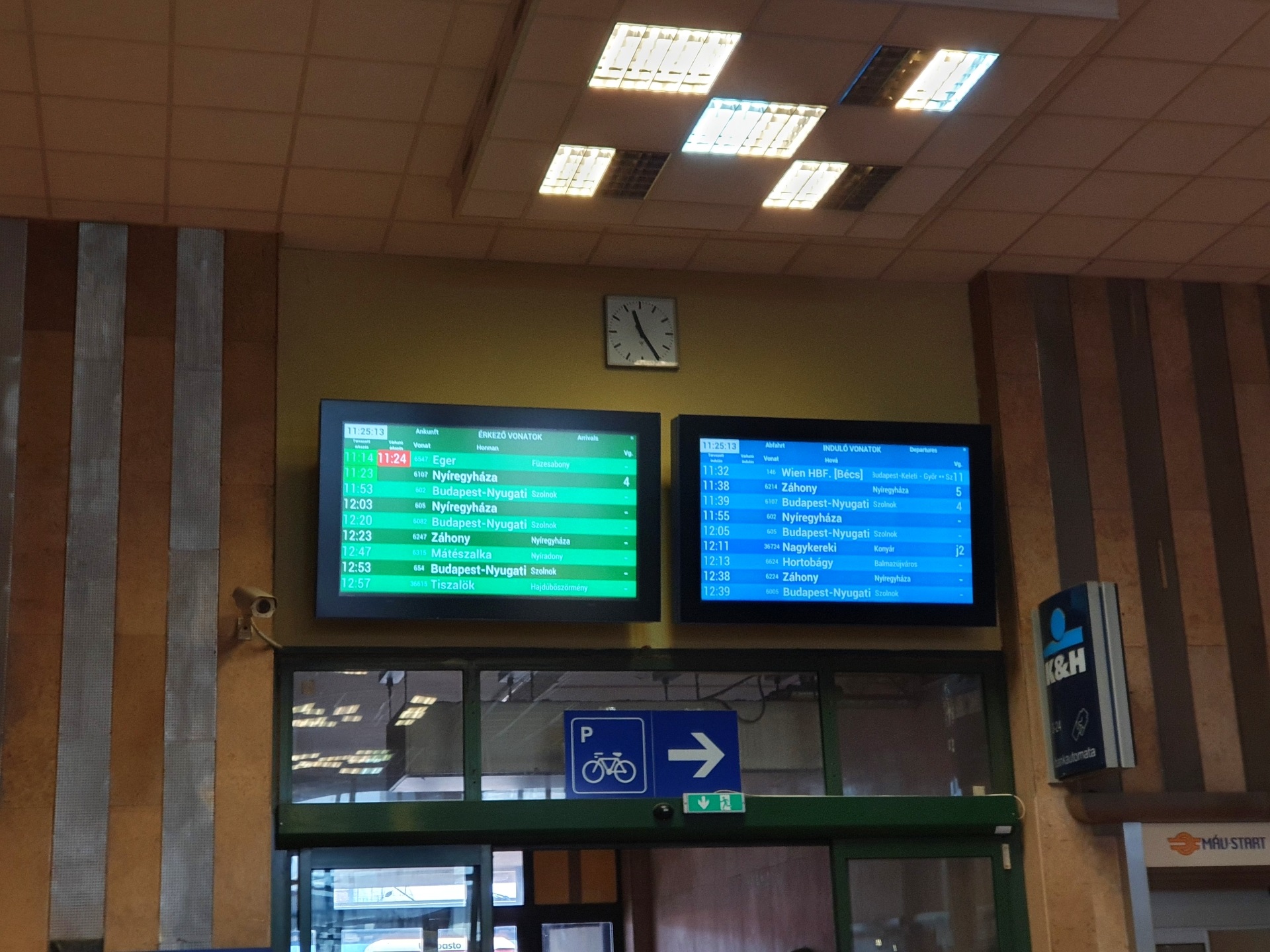
The display screen with the trains – arrivals and departures – similar to the one I know in Strasbourg.
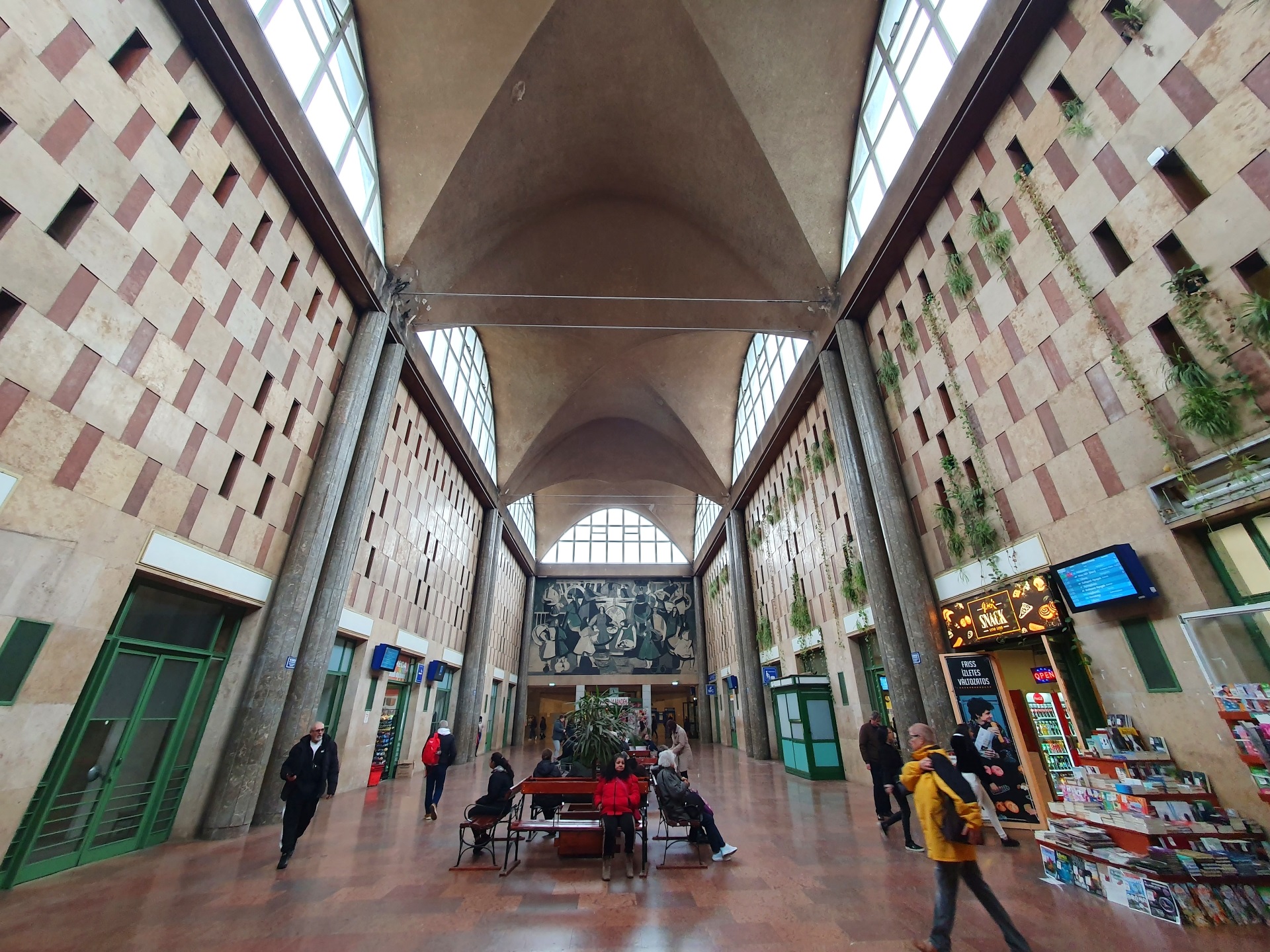
The main hall of Debrecen railway station.
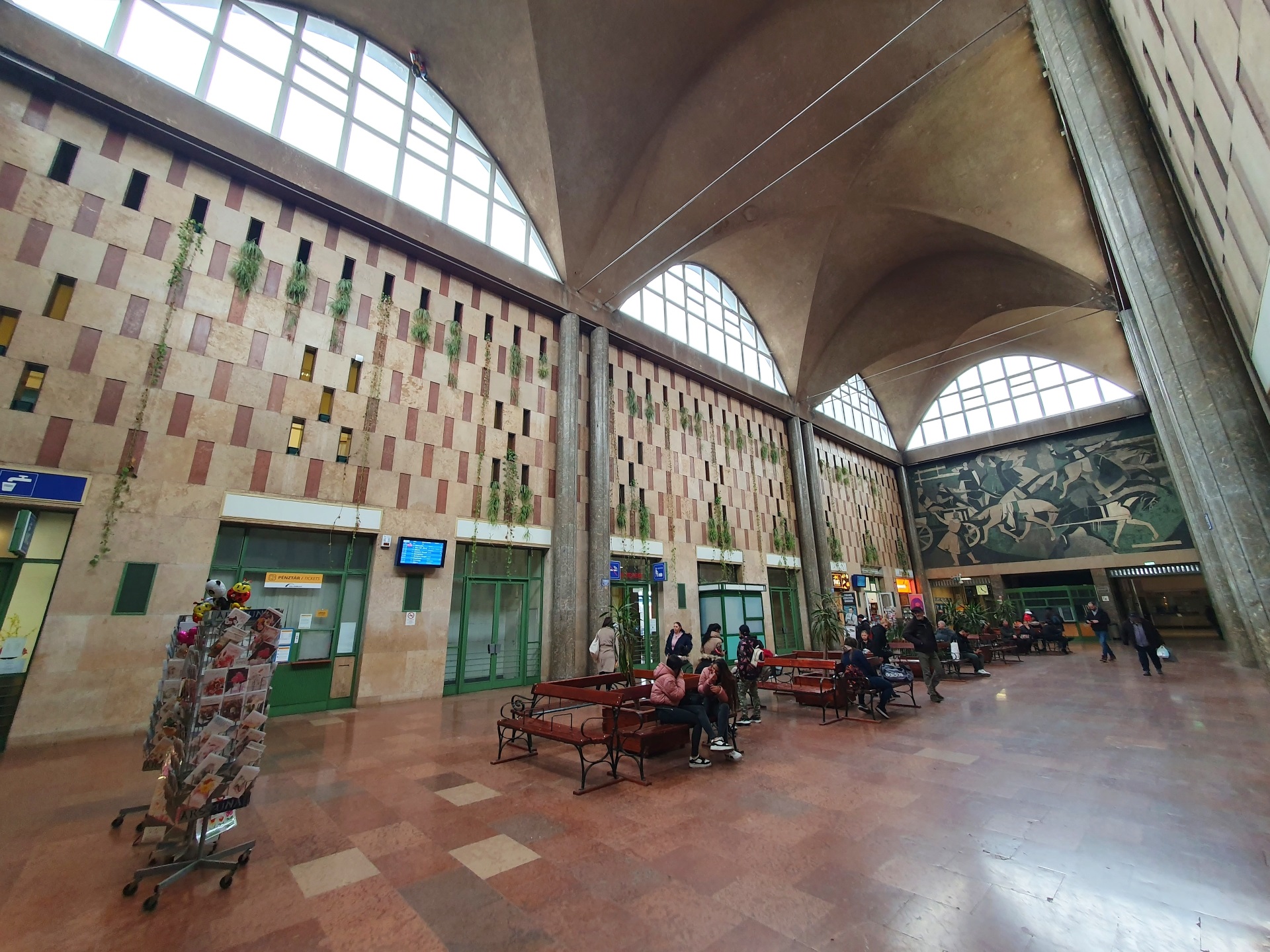
There are plants on the walls – that’s the green stuff.
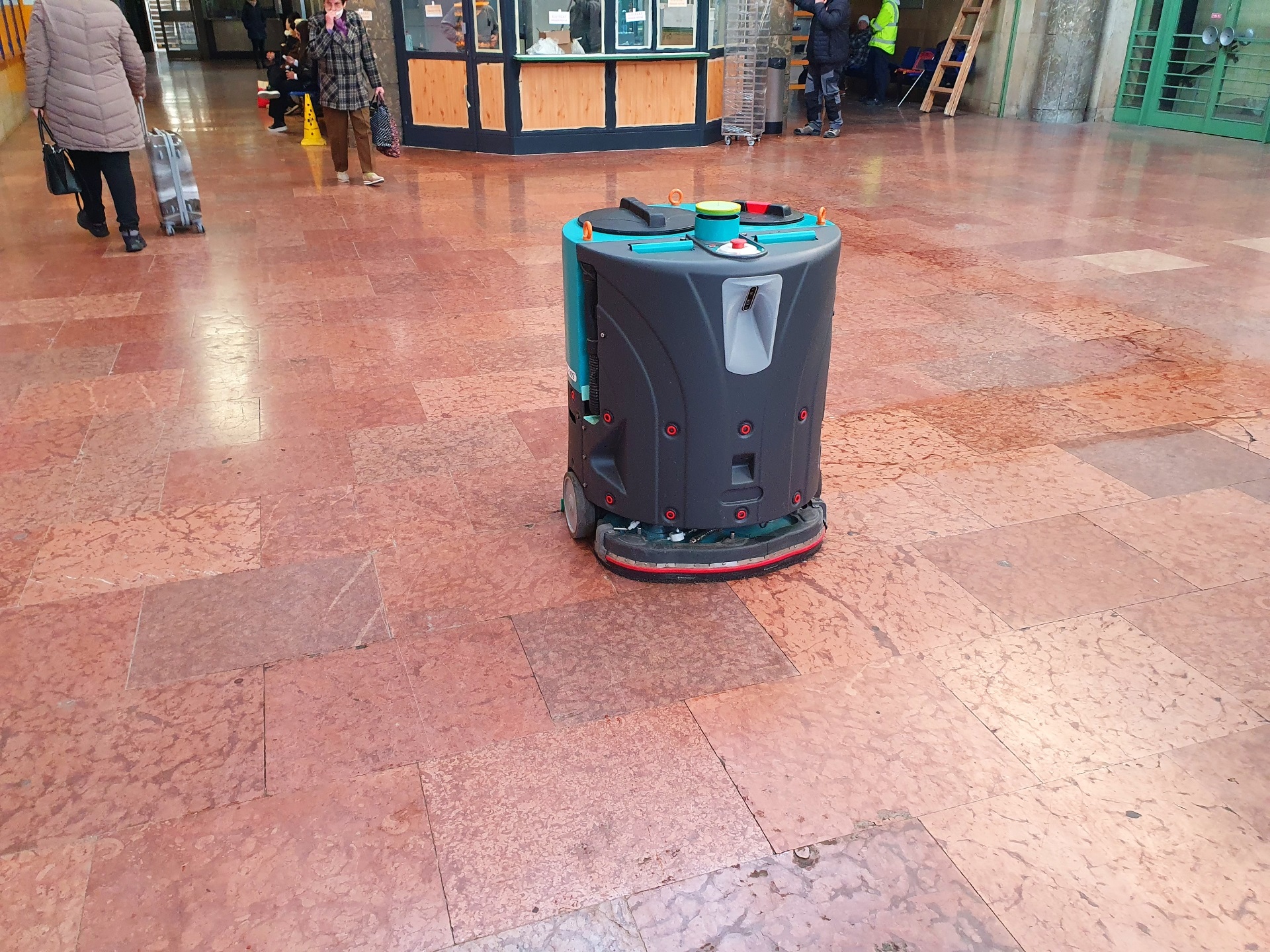
They have autonomous robots cleaning the floor. They even have a waiting room for children with toys and someone who can guard them while they play. English is widely spoken. The station has everything you need from a modern Western railway station.
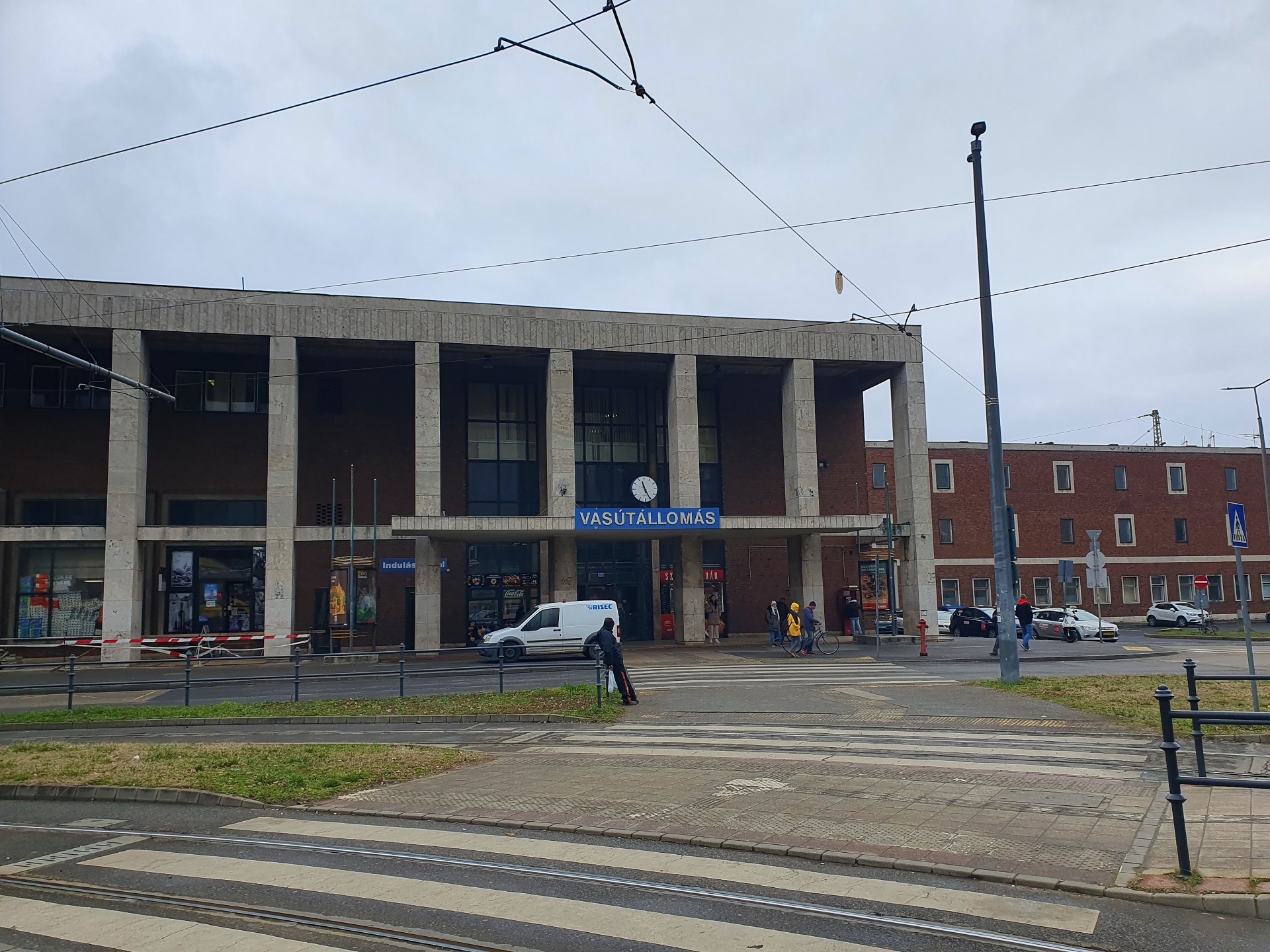
Railway station translates in Hungarian to Vasútállomás. Here is the entrance as seen from Debrecen city. Not particularly beautiful, but let’s just go a bit farther from Romania, to Nyíregyháza, which is 90 kilometers from the Romanian border! And let’s see how the landscape changes!
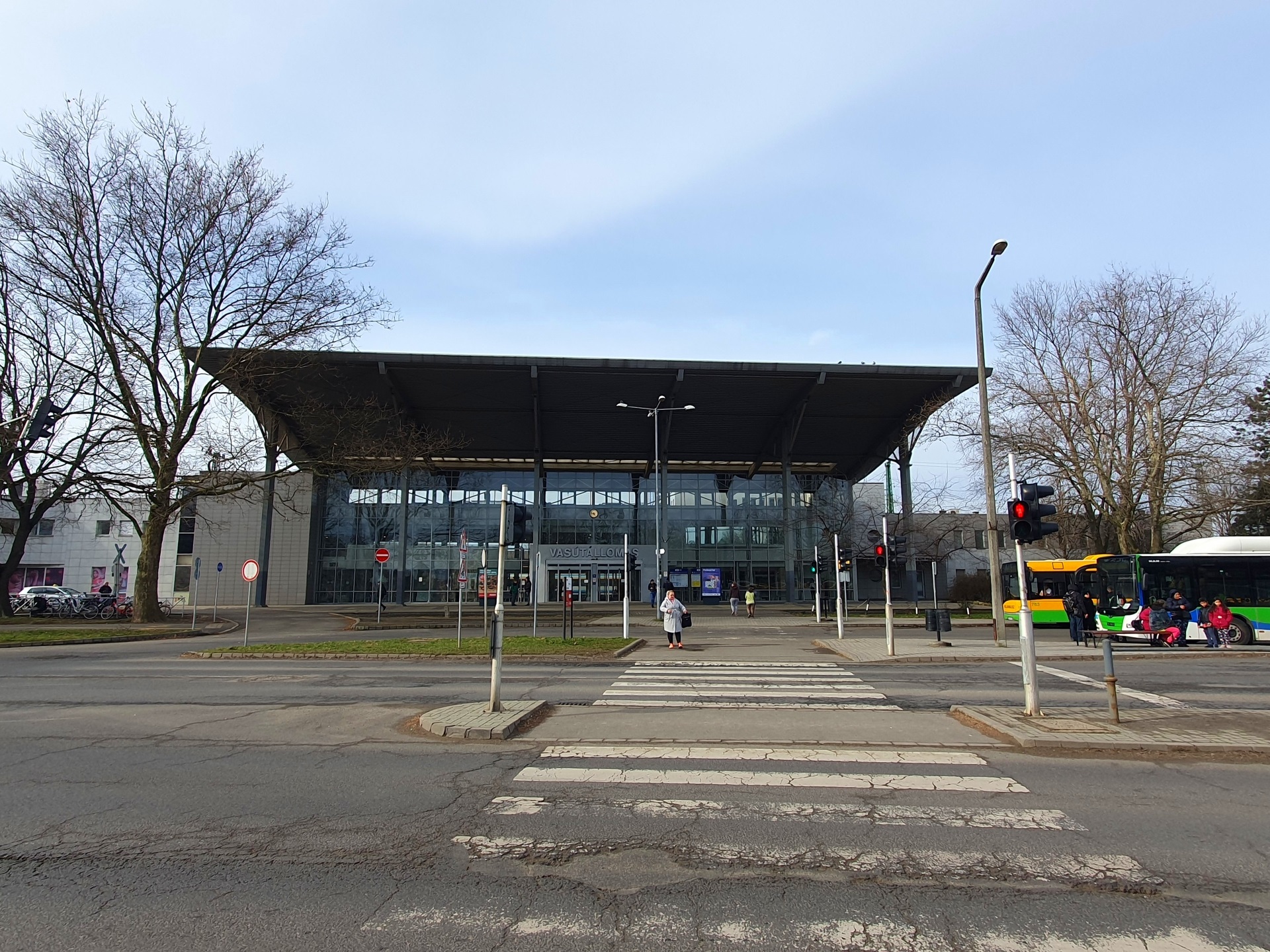
So, here it is: Nyíregyháza railway station as seen from Nyíregyháza city.
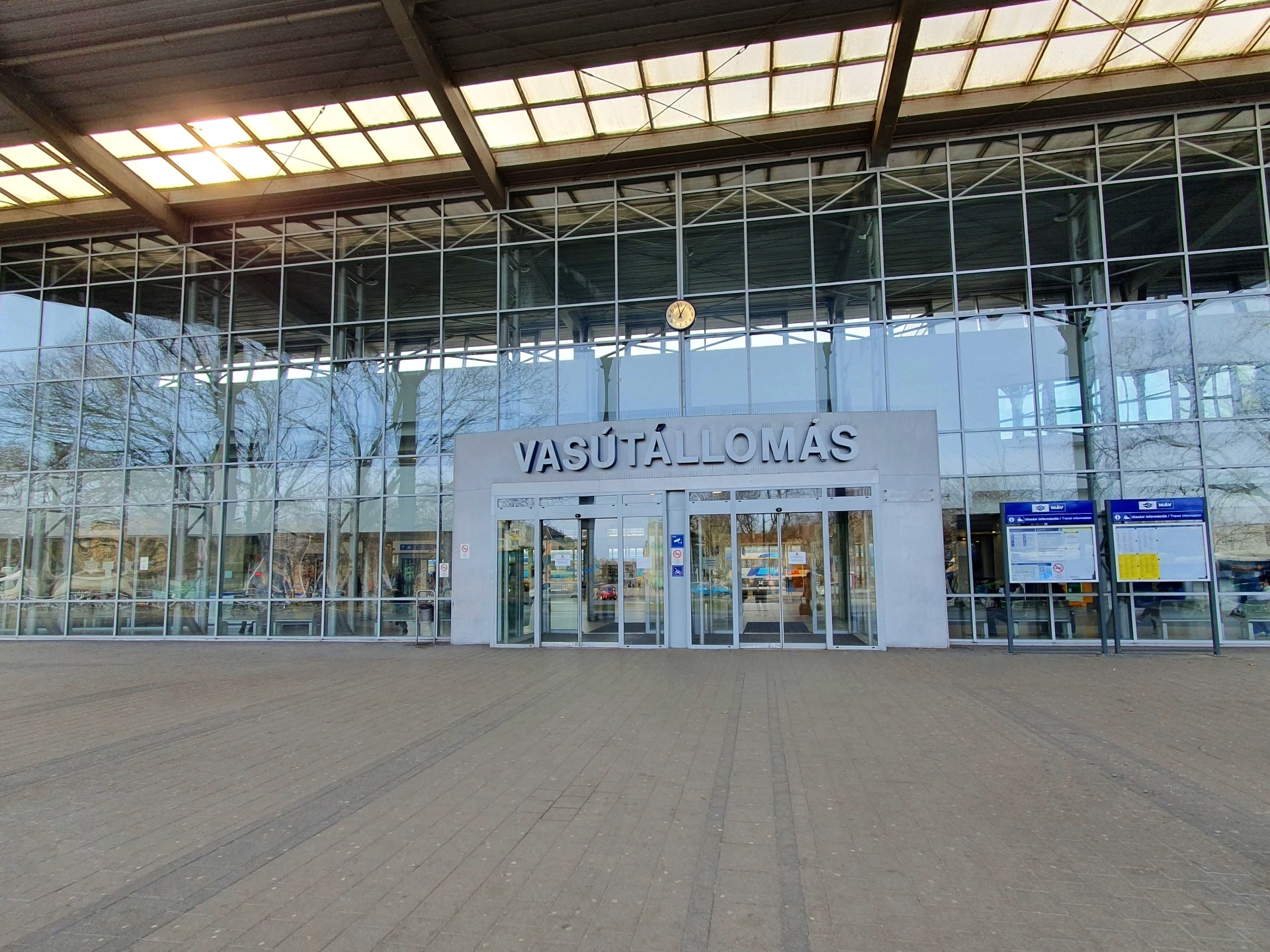
Let’s get inside!
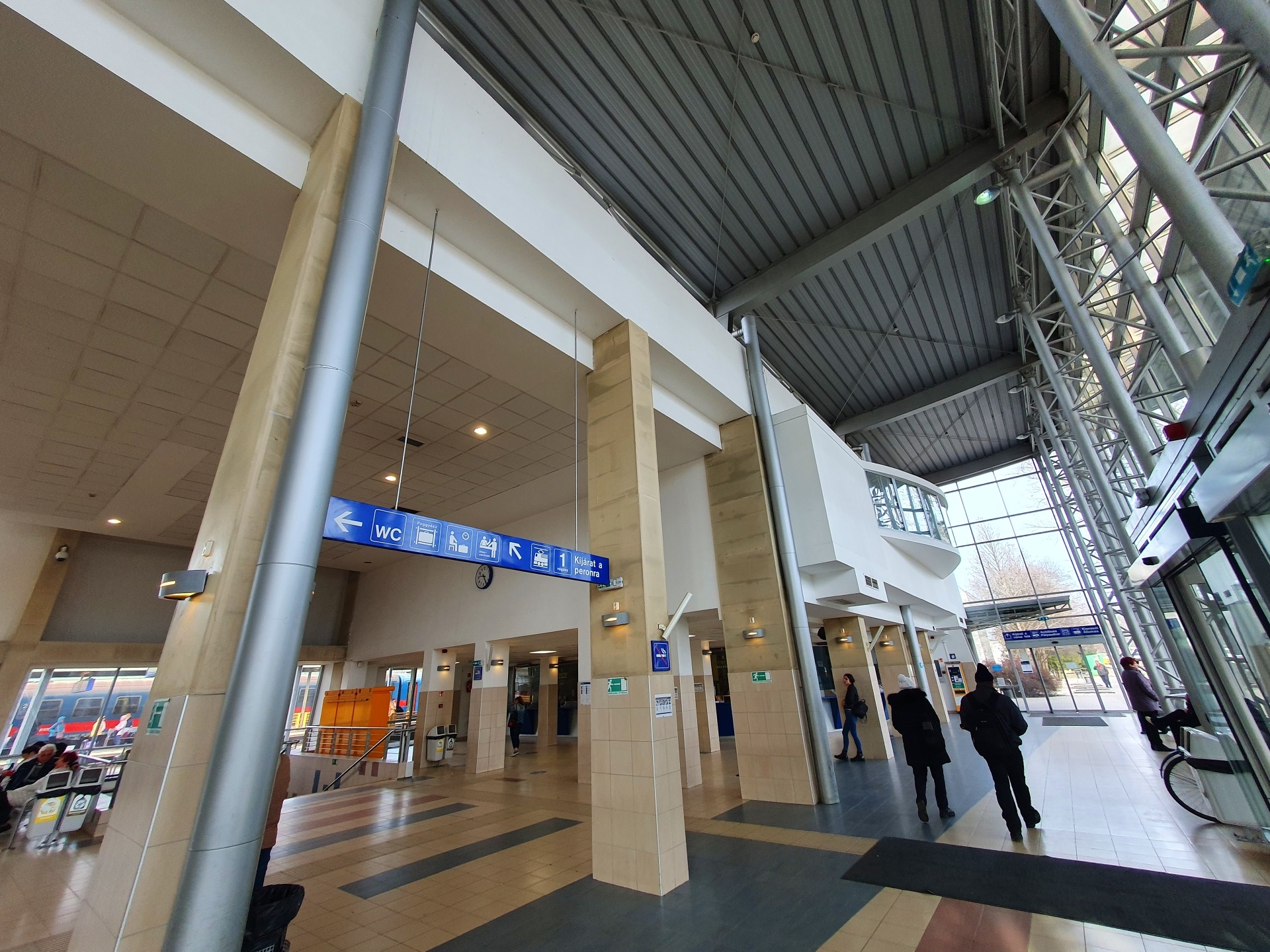
Well? What do you say?

This is the main hall and the exit towards the train platforms.

And there is also an upper level.
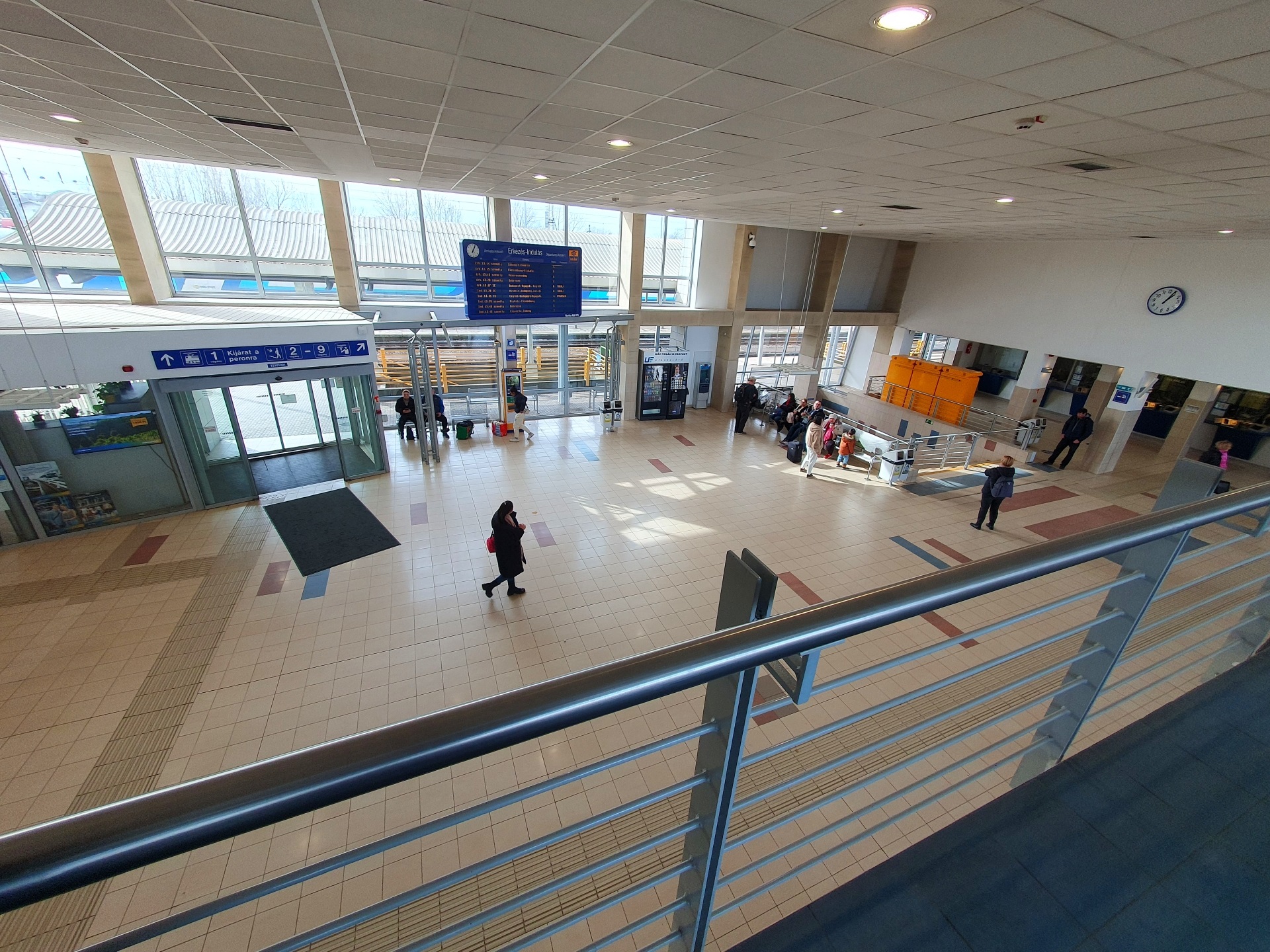
Is there a difference between the East and the West? Well, I guess the answer is obvious. The last photo is from a normal train in Hungary.
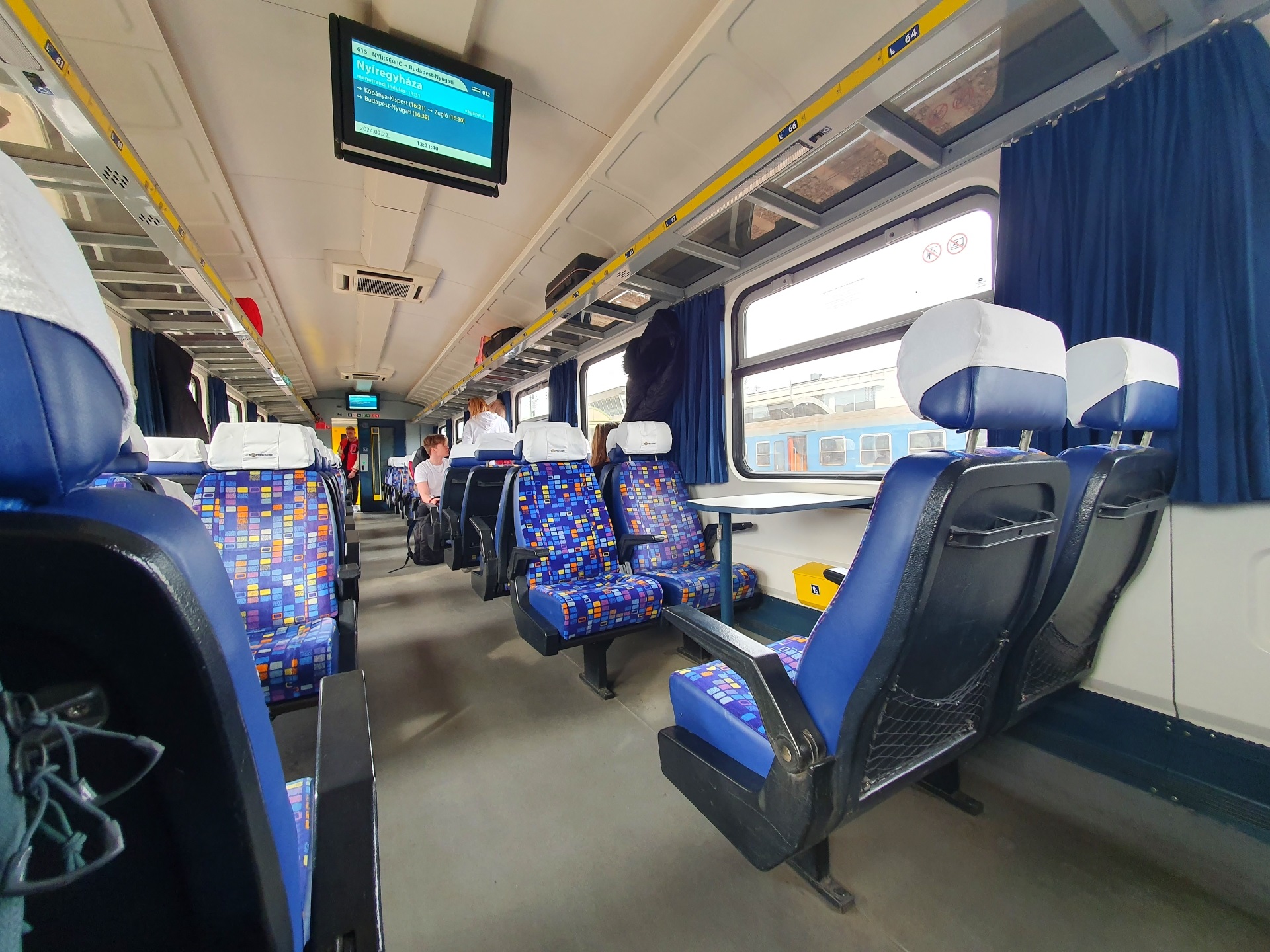
The article is titled “We Weren’t Allowed” because this is the typical answer from Romanians when they are confronted with the realities of their own country. They always blame “the others”, either the West, or Russia, or the bad luck, or the aliens, but they will never assume responsibility for the fact that, since 1989 (the fall of the communism) they didn’t care to fix their country (or maintain it functional). Similar to an alcoholic, it’s always other people’s fault, not theirs. For this reason I have chosen the quote of the article: “it’s not who you are, but what you do, that defines you”. What the Romanians did or didn’t do? What the Hungarians did or didn’t do? I leave it to your own judgement!

